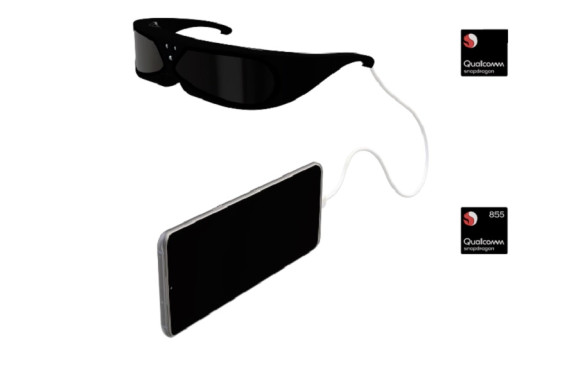US fabless chipmaker Qualcomm has showcased a new Snapdragon XR Smart Viewer reference design that will provide an easier way for hardware companies to manufacture lightweight augmented reality glasses. The tech giant made the announcement on the heels of the Augmented World Expo (AWE) event that would be held in Santa Clara, California. The company will also be exhibiting a prototype product at its stand during the expo.
The design will make AR glasses to also double as smart viewers for AR content that is stored on a smartphone. The lightweight glasses come with high-resolution displays and has sensors that can track movement, hands, and eyes. But the glasses are connected via a wire to a smartphone or a computing puck as there are very little to no processing is happening inside the glasses. The processing takes place in a device that is connected to the glasses, according to Hugo Swart, head of XR at Qualcomm.
The Qualcomm exec also added that there were benefits to distributing the load on what is carried in the body and what is worn on the head. “So you can put a smaller Snapdragon chip on the headset to do 6DoF tracking and eye tracking and 3D reconstruction and movement and hand tracking,” he said.
He also disclosed that the reference design is built with the help of GoerTek and will enable a lot of manufacturers of smart glasses to jump into space with AR and a VR smart viewers.
The Snapdragon Smart Viewer Reference Design features six-degrees-of-freedom (6DoF) movement for room scale XR experiences. With two dedicated 6DoF cameras for body tracking, users can walk around without the need for external motion sensors. It also has full support for hand tracking and gesture trackings such as tap, zoom, pinch, and scroll features, which could be used for interactions with virtual objects. There is also eye tracking.
To reduce power consumption using foveated rendering, Qualcomm worked with eye-tracking firm Tobii to have integrated eye tracking. This provides superior intuitive interfaces and enables gaze direction for fast interactions within the virtual environment.
The glasses also feature a display panel, built with JDI, to enable consumers to be immersed in their favorite content by supporting smooth experiences with 72KHz refresh rate and 2K resolution per eye. It works for both AR and virtual reality.
The reference design also supports standalone mode, where, in addition to tethering the headset via USB-C to a host device, the Snapdragon Smart Viewer Reference Design also delivers high-quality experiences in a mode where all the computing is done directly on the device.
(source)







